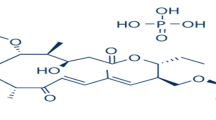Abstract
This research work explores the potential of modified agricultural waste for the sorption of quinoline from aqueous media. A quinoline removal efficiency of around 97 % and sorption capacities of ~20 (batch) and ~35 mg g−1 (fixed-bed) were achieved. Pseudo-second-order kinetics and Temkin isotherm best represented the equilibrium sorption data. The sorption of quinoline is exothermic and spontaneous in nature with a slight increase in the system entropy. The quinoline sorption mechanism is controlled by H-bonding, π–π dispersive interactions, boundary layer, and intraparticle diffusion. Microwave–chemical integrated regeneration technique retrieves the sorption capacity of the exhausted sorbent with 99.15, 97.64, and 95.55 % of the original, in three sorption–regeneration cycles. Energy recovery (19.365 MJ kg−1) from the quinoline-loaded sorbent and the potential utilization of left-over ash materials enhanced the prospective of the sorbent for the remediation of pollutants for a clean and green environment.







Similar content being viewed by others
References
Ahmaruzzaman M, Ahmed MJK, Begum S (2015) Remediation of Eriochrome black T-contaminated aqueous solutions utilizing H3PO4-modified berry leaves as a non-conventional adsorbent. Desalin Water Treat 56:1507–1519
Ahmed MJK, Ahmaruzzaman M (2015a) A facile synthesis of Fe3O4—charcoal composite for the sorption of a hazardous dye from aquatic environment. J Environ Manag 163:163–173
Ahmed MJK, Ahmaruzzaman M (2015b) Activated charcoal-magnetic nanocomposite for remediation of simulated dye polluted wastewater. Water Sci Technol 71:1361–1366
Ahmed MJK, Ahmaruzzaman M (2015c) Adsorptive desulfurization of feed diesel using chemically impregnated coconut coir waste. Int J Environ Sci Technol 12:2847–2856
Ahmed MJK, Ahmaruzzaman M (2015d) Fabrication and characterization of novel lignocellulosic biomass tailored Fe3O4 nanocomposites: influence of annealing temperature and chlorazol black E sequestration. RSC Adv 5:107466–107473
Ahmed MJK, Ahmaruzzaman M, Reza RA (2014) Lignocellulosic-derived modified agricultural waste: development, characterisation and implementation in sequestering pyridine from aqueous solutions. J Colloids Interface Sci 428:222–234
Ahmed MJK, Ahmaruzzaman M, Bordoloi MH (2015) Novel Averrhoa carambola extract stabilized magnetite nanoparticles: a green synthesis route for the removal of chlorazol black E from wastewater. RSC Adv 5:74645–74655
Ali I, Gupta VK (2007) Advances in water treatment by adsorption technology. Nat Protoc 1:2661–2667
Alonso-Davilla P, Torres-Rivera OL, Leyva-Ramos R, Ocampo-Perez R (2012) Removal of pyridine from aqueous solutions by adsorption on activated carbon cloth. CLEAN Soil Air Water 40:45–53
Ania CO, Parra JB, Menendez JA, Pis JJ (2005) Effect of microwave and conventional regeneration on the microporous and mesoporous network and on the adsorptive capacity of activated carbons. Microporous Mesoporous Mater 85:7–15
Baccar R, Blanquez P, Bouzid J, Feki M, Attiya H, Sarra M (2013) Modelling of adsorption isotherms and kinetics of a tannery dye onto an activated carbon prepared from an agricultural by-product. Fuel Proc Technol 106:408–415
Bai Y, Sun Q, Sun R, Wen D, Tang X (2011) Bioaugmentation and adsorption treatment of coking wastewater containing pyridine and quinoline using zeolite-biologically aerated filters. Environ Sci Techol 45:1940–1948
Burgos W, Nipon P, Mazzarese MC, Chorover J (2002) Adsorption of quinoline to kaolinite and montmorillonite. Environ Eng Sci 19:59–68
Collin G, Hoke H (1993) Quinoline and Isoquinoline. In: Elvers B, Hawkins S, Russey W, Schulz G (eds) Ullmann’s encyclopaedia of industrial chemistry, A22. VCH, Weinheim, pp 465–469
Enriquez R, Pichat P (2001) Interactions of humic acid, quinoline, and TiO2 in water in relation to quinoline photocatalytic removal. Langmuir 17:6132–6137
Freundlich HMF (1906) Over the adsorption in solution. Phys Chem 57:385–471
Gupta VK, Gupta B, Rastogi A, Agarwal S, Nayak A (2011) A comparative investigation on adsorption performances of mesoporous activated carbon prepared from waste rubber tire and activated carbon for a hazardous azo dye—Acid Blue 113. J Hazard Mater 186:891–901
Helfferich F (1963) Ion exchange. McGraw-Hill, New York
Jing J, Li W, Boyd A, Zhang Y, Colvin VL, Yu WW (2012) Photocatalytic degradation of quinoline in aqueous TiO2 suspension. J Hazard Mater 237–238:247–255
Jing J, Li J, Feng J, Li W, Yu WW (2013) Photodegradation of quinoline in water over magnetically separable Fe3O4/TiO2 photocatalyst. Chem Eng J 219:355–360
Jing J, Zhang Y, Li W, Yu WW (2014) Visible light driven photodegradation of quinoline over TiO2/graphene oxide nanocomposites. J Catal 316:174–181
Kim D, Caruthers JM, Peppas NA (1993) Penetrant transport in crosslinked polystyrene. Macromolecules 26:1841–1847
Langmuir I (1916) The constitution and fundamental properties of solids and liquids. J Am Chem Soc 38:2221–2295
Liao P, Yuan S, Xie W, Zhang W, Tong M, Wang K (2013) Adsorption of nitrogen-heterocyclic compounds on bamboo charcoal: kinetics, thermodynamics, and microwave regeneration. J Colloid Interface Sci 390:189–195
Moon J, Dons KK, Won KL (1989) Adsorption equilibria for m-cresol, quinoline, and 1-naphthol onto silica gel. Korean J Chem Eng 6:172–178
Rameshraja D, Srivastava VC, Kushwaha JP, Mall ID (2012) Quinoline adsorption onto granular activated carbon and bagasse fly ash. Chem Eng J 181–182:343–351
Santhi T, Manonmani S, Smitha T, Mahalaxmi K (2009) Adsorption kinetics of cationic dyes from aqueous solution by bioadsorption onto activated carbon prepared from cucumis sativa. J Appl Sci Environ Sanit 4:263–271
Temkin MJ, Pyzhev V (1940) Kinetics of ammonia synthesis on prompted iron catalyst. Acta Physicochem URSS 12:217–256
Thomsen AB, Henriksen K, Gron C, Moldrup P (1999) Sorption, transport, and degradation of quinoline in unsaturated soil. Environ Sci Technol 33:2891–2898
Weber WJ, Morris JC (1962) Kinetics of adsorption of carbon from solution. J Sanit Eng Div Am Soc Civil Eng 89:31–59
Zhu S, Bell PRF, Greenfield PF (1988) Isotherm studies on sorption of pyridine and quinoline onto Rundle spent shale. Fuel 67:1316–1320
Acknowledgments
Authors are grateful to the National Institute of Technology, Silchar, for providing laboratory facilities. Md. Juned K. Ahmed gratefully acknowledges the Ministry of Minority Affairs (MoMA), Government of India and University Grant Commission (UGC), New Delhi (F1-17.1/2012-13/MANF-2012-13-MUS-ASS-9763/(SA-III/Website)), for financial assistance under the Maulana Azad National Senior Research Fellowship (MANSRF).
Author information
Authors and Affiliations
Corresponding author
Rights and permissions
About this article
Cite this article
Ahmed, M.J.K., Ahmaruzzaman, M. Investigation on the effective remediation of quinoline at solid/solution interface using modified agricultural waste: an inclusive study. Int. J. Environ. Sci. Technol. 13, 1177–1188 (2016). https://doi.org/10.1007/s13762-016-0952-0
Received:
Revised:
Accepted:
Published:
Issue Date:
DOI: https://doi.org/10.1007/s13762-016-0952-0




